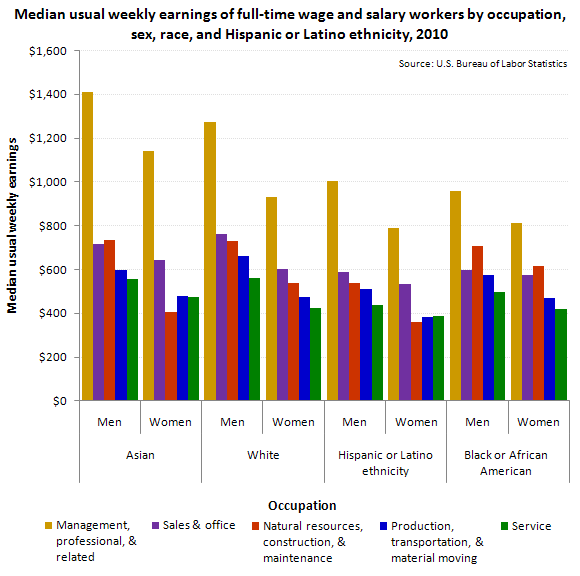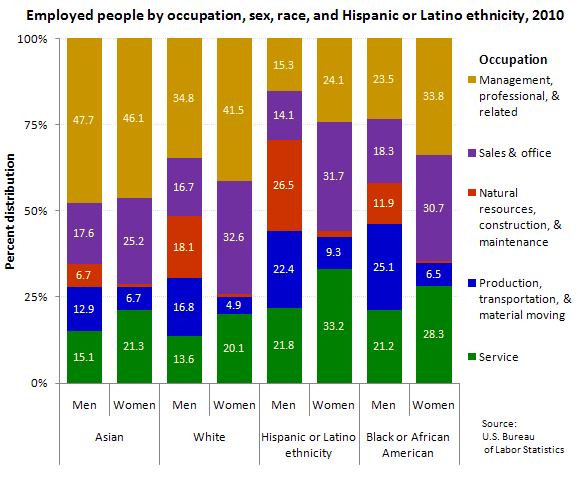
“...just as the Great Depression was part of the transition of the economy from agriculture to manufacturing, the Great Recession is part of the transition from manufacturing to a service-sector economy. Growth in productivity, plus changing comparative advantage, made a decline in manufacturing employment inevitable. Markets on their own do not manage such dramatic economic transformations well.”
Joseph Stiglitz, Nobel-prize winning economist, in Shambles of the US Labor Market
One may quibble with Stiglitz about the details of de-industrialization in the US economy. For example, economists at the Bureau of Economic Analysis and the Bureau of Labor Statistics have been laboring at the very difficult task of disentangling the relative US manufacturing declines due to productivity improvements (automation) vs those caused simply by runaways and outsourcing to low-wage, high-labor-intensity, and lower than US productivity environments in China, India and other areas of the developing world. However there can be no denying the fundamental trend at work for over 60 years as combined automation and globalization forces have steadily restructured the division of labor -- in other words the occupations, in the US economy from manufacturing to service-oriented jobs.
Below is a helpful USA table (using BLS data) detailing the changes since 1950:
| Percentage of non-farm workers employed in manufacturing and service jobs (All 2002 figures are to date): | |
| Manufacturing jobs | |
| 1950 | |
| 2002 | |
| Service jobs | |
| 1950 | |
| 2002 |
| Examples of manufacturing job losses. Number employed in thousands: | |
| Textiles | |
| 1960 | |
| 2002 | |
| Apparel | |
| 1960 | |
| 2002 | |
| Metal1 | |
| 1960 | |
| 2002 |
| Examples of service job gains. Number employed in thousands: | |
| Educational2 | |
| 1960 | |
| 2002 | |
| Business services3 | |
| 1960 | |
| 2002 | |
| Health | |
| 1960 | |
| 2002 | |
| 1- primary metal industries such as steel; 2 - private education institutions; 3 - services to businesses such as advertising, data processing, credit reporting, etc. Source: USA TODAY analysis of Bureau of Labor Statistics data |
The trade union movement has placed halting and reversing the de-industrialization trend at near the top of its economic and political agenda. While long range trends point to disappointment on this program, there are deep reasons that motivate the AFL-CIO to focus on manufacturing.
First, mass manufacturing is the foundation of modern industrial unionism. It provided both the economic and political strength that compelled enactment of the laws that legalize ALL collective bargaining rights. The economic strength consisted in the right to strike and the immense costs that right could impose on employers, especially where there were large concentrations of workers. That large concentration was a key feature of the economic transition of the previous era that gave rise to the industrial revolution from a primarily agricultural economy. Without that strength, the rights of any and all workers -- both public and private, manufacturing and service, to effectively bargain for a fair return on their labor, and increasingly, their human capital is seriously undermined. It is no accident that attacks on all labor rights have escalated and become ever more vicious every year that de-industrialization has worsened.
Second, as manufacturing -- and with it, unionism -- has weakened, so have the entire “middle class” aspirations of working Americans gone up in smoke. The only alternative path to a reasonable standard of living -- a college education -- becomes increasingly out of reach for working families. Students are now a trillion dollars in debts they will never be able to pay if current inequality trends continue. Universities are charging hundreds of thousands of dollars for training for occupations that simply do not pay enough to pay back the educational investment. Many students begin, but cannot afford to complete, their education.
Some pin hopes on political battles for labor law reform, or raises in the minimum wage. Both are important battles. The major difference between US and European standards of social benefits and protections are the stronger union rights in the latter. National health care, superior public education, retirement and infrastructure systems were all consequences of European labor’s stronger bargaining power and political strength coming out of WWII. However, even though Europe is better, the de-industrialization forces are at work there too and labor strength is weakening -- just not as fast or as dramatically as in the US. The vast erosion of workers’ rights to receive the same proportion of increase in national wealth as capital has also had the side effect of corrupting democratic institutions, like Congress. The corruption is so severe that it has become the anthem of the Occupy movement, and it becomes increasingly doubtful anything short of a huge social upheaval in class relations at the grassroots can correct the dark course our country is on.
News coming out of China of strike waves against the labor-intensity and extreme low wage manufacturing may end up being the most effective brake on the export of jobs NOT motivated by automation. There are signs China’s immense reserve army of subsistence agricultural labor can no longer sustain the growth of this mode of manufacturing. If so, wages and incomes of Chinese workers will rise, and higher productivity, higher skilled labor will be required for the next stage in China’s development.
As Stiglitz notes, increasing inequality is itself becoming a cause of even more draconian inequality as the majority of the people are not able to provide the demand needed to resume the level of growth needed for escaping the depression. For thirty years, workers have been given higher and higher limits on their credit cards, but little or no real wage increases.
A new working class paradigm?
If the manufacturing era is irreversibly passing from the US labor market, can non-manufacturing workers find a path to bargaining power sufficient to reverse inequality trends?
Who are the service workers?
All sales, most professional and technical, half of transportation, and all health services, education, financial services, personal care and service, office and administrative, food service, protective and security workers -- are all in the non-manufacturing sectors. A substantial majority earn under the median personal income (all sources including benefits and capital income) of 39,600 per year. Service work statistics now also include those manufacturing workers who are employed as contract labor through temporary agencies as well. A perusal of the BLS tables on 800 occupations, their number and compensation, will give the reader a good picture of the current division of labor in the United States. The table below from the BLS illustrates the distribution of service worker incomes relative to other kinds of work by race, nationality, and sex. Note that the "management" measure includes all professional and technical as well as just true manaagment. Thus most of those jobs are also service in essence, as are many of the sales and adminstrative occupations. The graph immediately demonstates the sharp bifurcation between college educated and non-college educated occupations. It also reveals the narrowing gap between industrial and service incomes, a reflection of declining union strength in manufacturing. The gap between women and men in all occupations is still large, as is the gap between Latino and African American workers, and white and Asian Americans in the more skilled occupations. The next BLS table illustrates the distribution of workers by occupational type, race, nationality and gender. Some characteristics key to answering the questions of empowerment in the service work world:

Over the past two or three decades there have emerged a number of factional conflicts within and between unions in the service sector primarily arising out of contradictions between ideals of democratic industrial unionism and the bargaining realities of representing service workers. In the first place class lines in traditional manufacturing have historically been very sharply drawn. Management and labor have little in common beyond getting the product out the door. Distinctions between hourly and salary, between day rate and piece rate also used to be relatively simple to manage and define. There are those that hire and fire, and those that are hired and fired -- the union represents the latter, period. A union rep that gets cozy with the boss in manufacturing is (or was) almost always suspected of being up to no good. And those suspicions were often well founded given the endless schemes of manufacturing management to compromise union opposition to its latest speedup, or more work for no more pay, plans.
All these matters are considerably muddier in much of service work. The layers of supervision are byzantine; definitions of appropriate bargaining units under labor law are arcane. Salaried pay classifications invade even very low wage jobs leading to big abuses of overtime and denial of rights to union representation. I recall asking one employer “who has the power to effectively recommend hiring and firing?” (“effectively recommend” is a key term in labor law determining eligibility for union membership). He replied “everyone”. That was not far from the truth in that firm. The largest teachers union, the NEA, encourages principals and supervisor membership. The American Federation of Teachers (AFT) prohibits it. “Business unionism” is the phrase given in manufacturing to joining with the boss in various productivity enhancing schemes -- schemes that often resulted in layoffs. While there has always been tension between company loyalty and “watching your wallet carefully to avoid being robbed” -- the excesses of business unionism were more easily scorned in manufacturing. Not so in many services, precisely because of the closer direct relationship between workers and the customers they serve.
Increase empowerment for service workers will not likely be achieved in the traditional industrial union framework. Strength must arise from the real economic relationships that the character of the work determines. The key character that is the ultimate strength of service work is the relationship with the people served. Some new frameworks and approaches are needed to make that happen. Public workers under terrible attacks in Wisconsin, Ohio, Indiana, California and other states are finding the ways to make this happen. It is an historic mission, one that will in fact be key to escape from this depression, and the return of good times to the USA!
